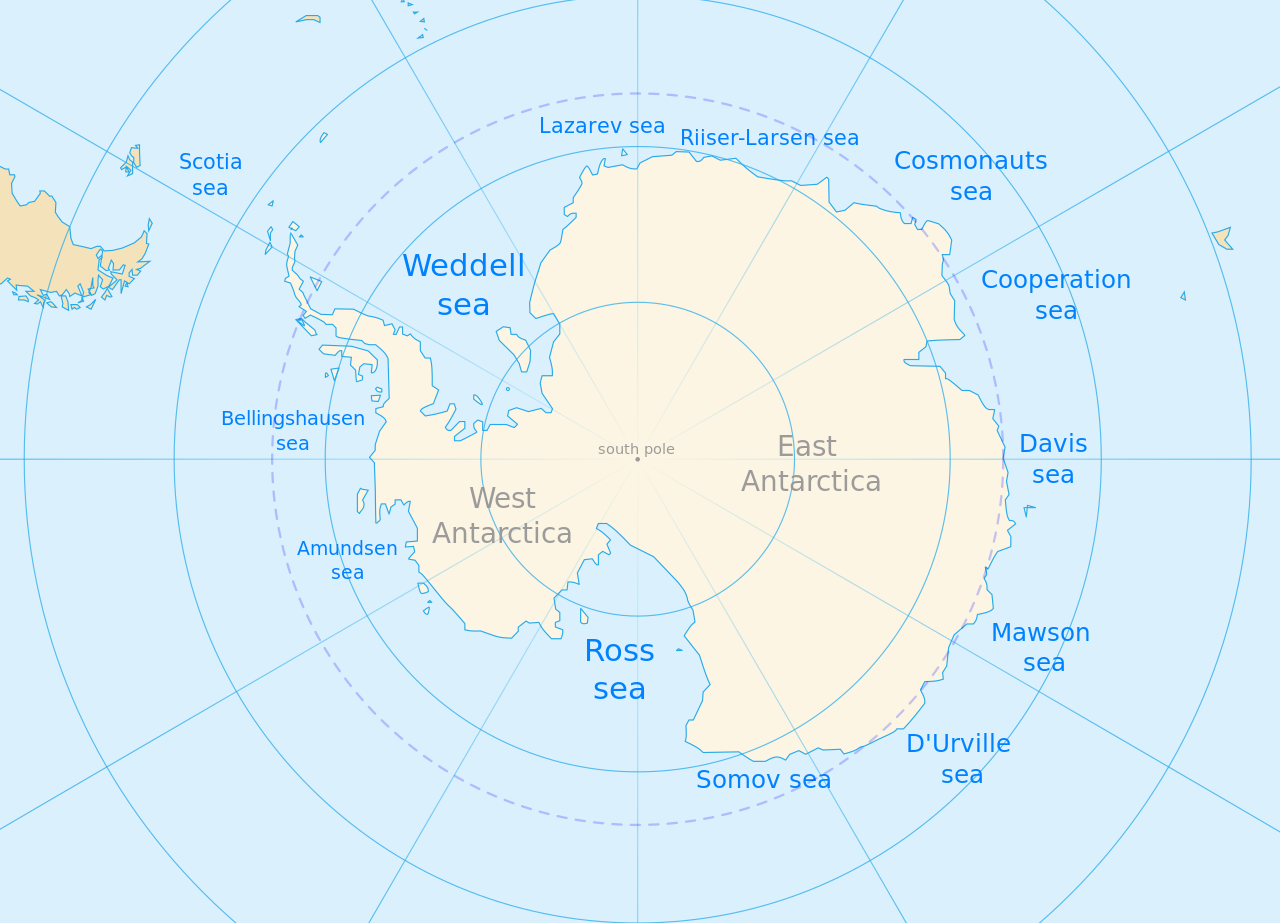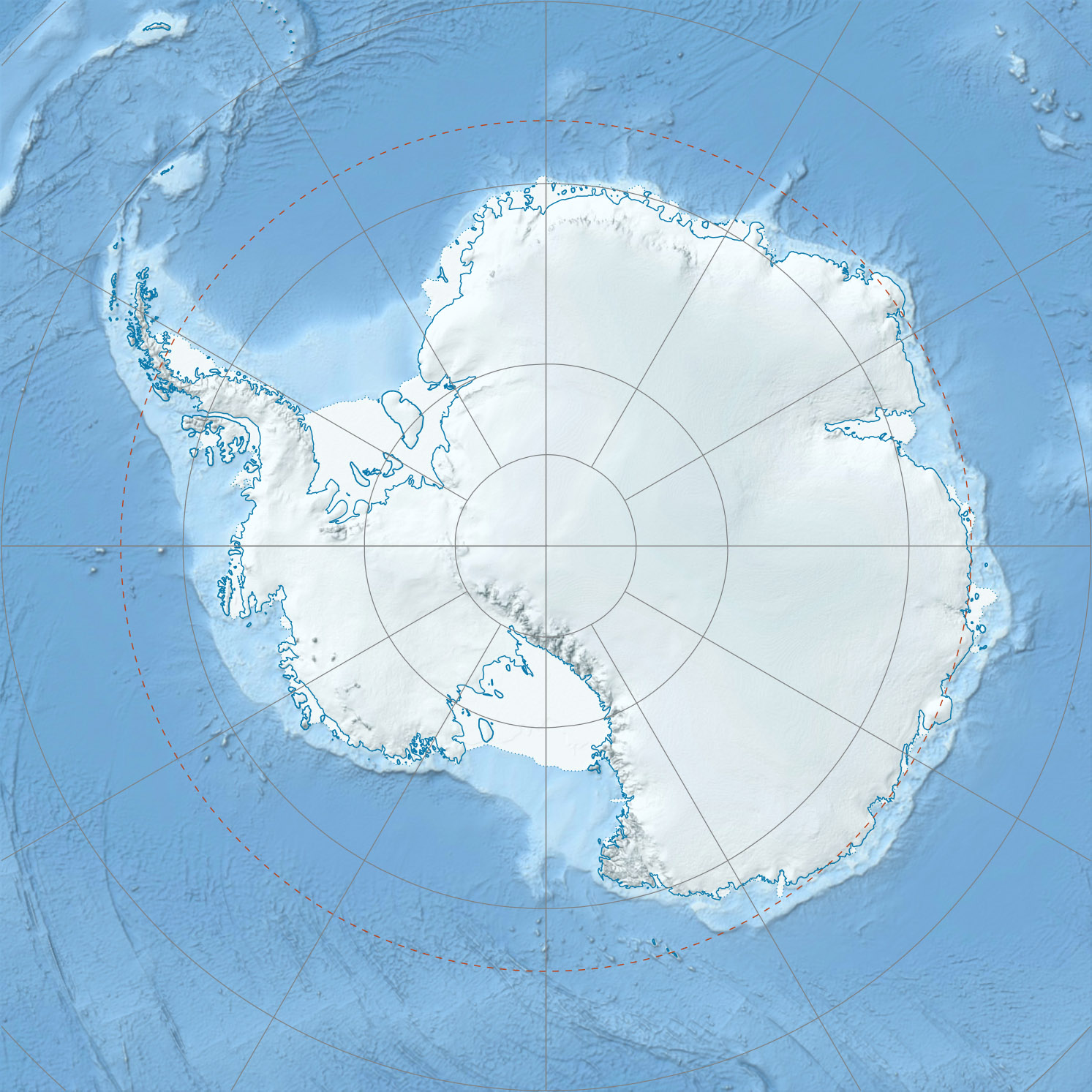
NEWS
FLASH
- Scientists discover what they believe is a giant prehistoric dinosaur
ant, a 'Sectasaur,' in a cave in Antarctica. They name their incredible
find: "Insectasaurus Rex." The rumours of such things, started
by Fabian von Bellinghausen's infamous find, appears to be true.
THE
WEDDELL SEA
The Weddell Sea is part of the Southern Ocean and contains the Weddell Gyre. Its land boundaries are defined by the bay formed from the coasts of Coats Land and the Antarctic Peninsula. The easternmost point is Cape Norvegia at Princess Martha Coast,
Queen Maud Land. To the east of Cape Norvegia is the King Haakon VII Sea. Much of the southern part of the sea is covered by a permanent, massive ice shelf field, the Filchner-Ronne Ice Shelf.
The sea is contained within the two overlapping Antarctic territorial claims of Argentine
Antarctica, the
British Antarctic Territory, and also resides partially within the Antarctic Chilean Territory. At its widest the sea is around 2,000 kilometres (1,200 mi) across, and its area is around 2.8 million square kilometres (1.1×106 sq mi).
Various ice shelves, including the Filchner-Ronne Ice Shelf, fringe the Weddell sea. Some of the ice shelves on the east side of the Antarctic Peninsula, which formerly covered roughly 10,000 square kilometres (3,900 sq mi) of the Weddell Sea, had completely disappeared by 2002. The Weddell Sea has been deemed by scientists to have the clearest water of any sea. Researchers from the Alfred Wegener Institute, on finding a Secchi disc visible at a depth of 80 metres (260 ft) on 13 October 1986, ascertained that the clarity corresponded to that of distilled
water.
In his 1950 book The White Continent, historian Thomas R. Henry writes: "The Weddell Sea is, according to the testimony of all who have sailed through its berg-filled waters, the most treacherous and dismal region on
Earth. The Ross Sea is relatively peaceful, predictable, and safe." He continues for an entire chapter, relating myths of the green-haired merman sighted in the sea's icy waters, the inability of crews to navigate a path to the coast until 1949, and treacherous "flash freezes" that left ships, such as Ernest Shackleton's Endurance, at the mercy of the ice floes.
WEDDELL SEA HISTORY
In 1823, British sailor James Weddell discovered the Weddell Sea. Otto Nordenskiöld, leader of the 1901–1904 Swedish Antarctic Expedition, spent a winter at Snow Hill with a team of four men when the relief ship became beset in ice and was crushed. The crew managed to reach Paulet Island where they wintered in a primitive hut. Nordenskiöld and the others were eventually picked up by the
Argentine Navy at Hope Bay. All but one survived the ordeal.
The Antarctic Sound is named after the expedition ship of Otto Nordenskiöld. The sound that separates the tip of the Antarctic Peninsula from Dundee Island is also referred to as
"Iceberg Alley", because of the huge icebergs that are often seen here. Snowhill Island, located east of the Antarctic Peninsula is almost completely snow-capped, hence its name. The Swedish Antarctic Expedition under Otto Nordenskiöld built a cabin on the island in 1902, where Nordenskiöld and three members of the expedition had to spend two winters.
In 1915, Ernest
Shackleton's ship, Endurance, got trapped and was crushed by ice in this sea. After 15 months on the pack-ice Shackleton and his men managed to reach Elephant Island and safely returned home. In March 2022, it was announced that the well-preserved wreck of the Endurance had been discovered four miles (6.4 km) from its anticipated location, at a depth of 3,008 metres (9,869 ft).

The
many seas of East and West Antarctica
THE
ROSS SEA
The Ross Sea is a deep bay of the
Southern Ocean in
Antarctica, between Victoria Land and Marie Byrd Land and within the Ross Embayment, and is the southernmost sea on
Earth. It derives its name from the British explorer James Clark Ross who visited this area in 1841. To the west of the sea lies Ross Island and Victoria Land, to the east Roosevelt Island and Edward VII Peninsula in Marie Byrd Land, while the southernmost part is covered by the Ross Ice Shelf, and is about 200 miles (320 km) from the South Pole. Its boundaries and area have been defined by the New Zealand National Institute of Water and
Atmospheric Research as having an area of 637,000 square kilometres (246,000 sq mi).
The circulation of the Ross Sea is dominated by a wind-driven ocean gyre and the flow is strongly influenced by three
submarine ridges that run from southwest to northeast. The circumpolar deep
water current is a relatively warm, salty and nutrient-rich water mass that flows onto the continental shelf at certain locations. The Ross Sea is covered with ice for most of the year.
The nutrient-laden water supports an abundance of plankton and this encourages a rich marine fauna. At least ten mammal species, six bird species and 95
fish species are found here, as well as many invertebrates, and the sea remains relatively unaffected by
human activities. New Zealand has claimed that the sea comes under its jurisdiction as part of the Ross Dependency.
Marine biologists consider the sea to have a high level of biological diversity and it is the site of much scientific research. It is also the focus of some environmentalist groups who have campaigned to have the area proclaimed as a world marine reserve. In 2016 an international agreement established the region as a marine park.

Antarctica
is surrounded by the Southern Ocean
The Antarctic is barely a barely explored region. No sooner the
Sectasaur species is discovered, than all of the expedition members
various are murdered by Lin Po
Chang. The Chinese entrepreneur smuggles
an egg aboard the KoolArctic, but in the warm conditions of that ship,
the egg hatches, the lava feeding voraciously, turns into a pupa, and
then eats a crew member who tries to kill it. The adult then kills
another crew member, who raises a weapon to strike, and the KoolArctic suffers massive damage as the crew battle the powerful
prehistoric insect,
sending the ship to the bottom of the ocean under British Navy orders to
scuttle the ship. The Sectasaur then swims for the Atlantic
Express, bound for the docks in
Southampton, and the prehistoric giant heads up the Beaulieu River to Bucklers Hard.
John Storm says that King
Kong was more Unsinkable Sam, in finding another passing vessel to
board.



